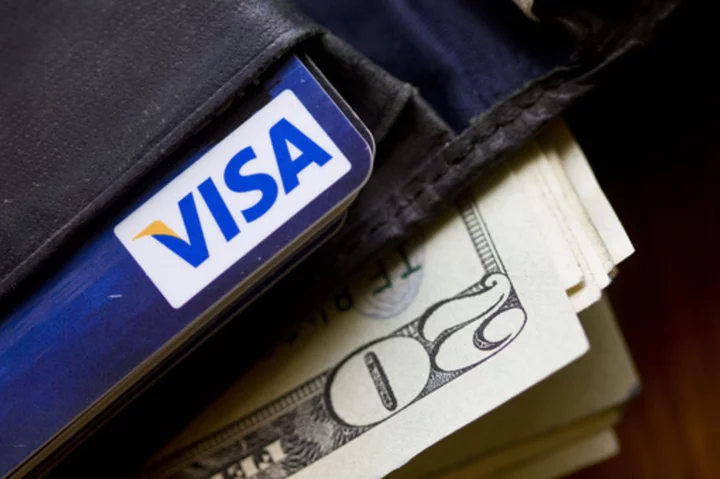If you set money goals for 2023 back in January, now can be a smart time to check in on your progress. And if you didn’t, it’s not too late to create goals for the next six months and beyond.
“If you don’t have your goals, everyone is so busy with life that a year will whiz by and you’ll have forgotten to start,” says Dan Casey, owner of Bridgeriver Advisors, a financial firm in Bloomfield Hills, Michigan.
With many people’s money goals hampered by the dual headwinds of inflation and economic uncertainty, it’s easy to get discouraged if you haven’t made as much progress as you’d hoped. Financial experts offer these five strategies for using the midyear point as a way to get back on track, or to embrace a slightly altered course.
DEFINE AND REFINE WHAT YOU WANT
Rebecca Eve Selkowe, New York City-based accredited financial counselor and owner of the financial counseling firm RebeccaEve.com, urges people to first define what they want their money to accomplish, noting that those goals can shift over time. That discussion can lead to unexpected discoveries, such as realizing what you actually want is not just to pay off debt but to work fewer hours or change jobs.
“Just articulating the goal with that specificity can be enough to start looking at the numbers more deeply,” she says.
DEFINE THE ACTION STEPS
Once you’ve refined or established your goals, Selkowe says, it’s time to come up with a specific plan to achieve them. If you know you need a certain down payment to buy the home you want, then you can create a budget and start setting aside money each month in a high-yield online savings account, for example.
Valerie Rivera, certified financial planner and founder of FirstGen Wealth, a virtual financial planning firm in Chicago, suggests setting a timeline, too. “We make a spending worksheet because a lot of people don’t know where their money goes. That gives you accountability,” she says.
Opening a separate savings account for each specific goal can also help, says Keith Spencer, CFP and owner of Spencer Financial Planning in Spokane, Washington. “Whether it’s saving for a home improvement, vacation or wanting to pay off the mortgage sooner, I find it helpful to set up a dedicated account for that so it’s more tangible,” he says, adding that clients can more easily watch the money saved grow over time and track progress.
SCHEDULE RECURRING CHECK-INS
In addition to the midyear check-in, Casey suggests making quarterly or even monthly check-ins for yourself. “We get overwhelmed thinking about the whole year, so create micro-timelines instead,” he suggests. You could set a mini-goal for what you want to have saved by the end of the month or quarter, for example.
Then, you can make adjustments to catch up to your bigger goal if you fall behind or find you have the flexibility to increase your savings rate. “You can even automate the savings so it’s out of sight, out of mind,” he adds.
FOLLOW UP WITH AN ACCOUNTABILITY BUDDY
Sharing your goals with a friend, coach or financial professional who can help keep you on track can be a natural way to find some extra motivation, Rivera says. “It needs to be someone you would feel a little uncomfortable with if you had to cancel or not give them an update,” she says. A partner can also serve as an accountability buddy, especially if you are working on goals together.
Jonathan Kiehl, CFP and founder of Evenkiehl Financial Planning in Lancaster, Pennsylvania, urges clients to make accountability check-ins as enjoyable as possible so it’s an activity they look forward to. “That could mean going to a favorite coffee shop or dinner date, as long as it provides an atmosphere where you can review spending plans,” he says.
RECALIBRATE AND CELEBRATE YOUR PROGRESS
Rivera suggests looking back on how you’ve gotten closer to achieving your goals while also acknowledging why progress might have been slower than you envisioned. “Maybe there were other obligations or other unexpected things that came up,” she says. Higher prices for many consumer goods, including groceries, have strained many people’s budgets, making it harder to save, for example.
Kiehl says you can also get back on track if you overspent one month by cutting back in another area the following month to make up for it. “It’s easy to get caught up in individual categories, but sometimes a broader approach can help. All you need to worry about is taking the savings off the top,” he says, meaning prioritizing savings before filtering the rest of your spending toward other demands.
Once you achieve a goal, Casey recommends celebrating. “That could be a really nice dinner if you’ve paid off $10,000 in credit card debt. Or if you’ve saved $100,000 in your 401(k), it could be a nice trip,” he says. He suggests keeping spending related to a celebration under 1% of the value of what you achieved.
Then, it’s time to pick your next goal.
________________________________
This column was provided to The Associated Press by the personal finance website NerdWallet. Kimberly Palmer is a personal finance expert at NerdWallet and the author of “Smart Mom, Rich Mom.” Email: kpalmer@nerdwallet.com. Twitter: @KimberlyPalmer.
RELATED LINK:
NerdWallet: How to set financial goals https://bit.ly/nerdwallet-how-to-set-money-goals









